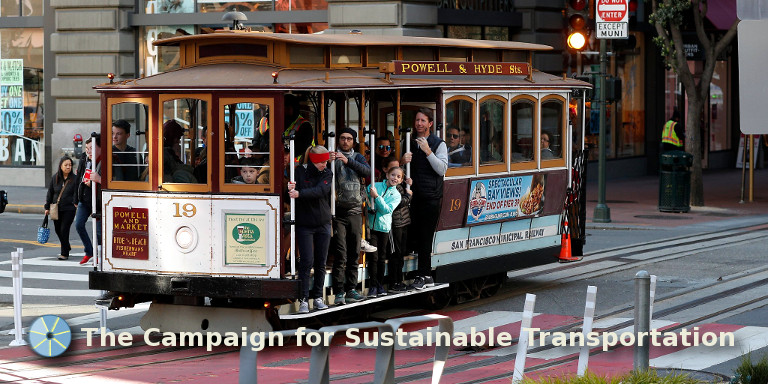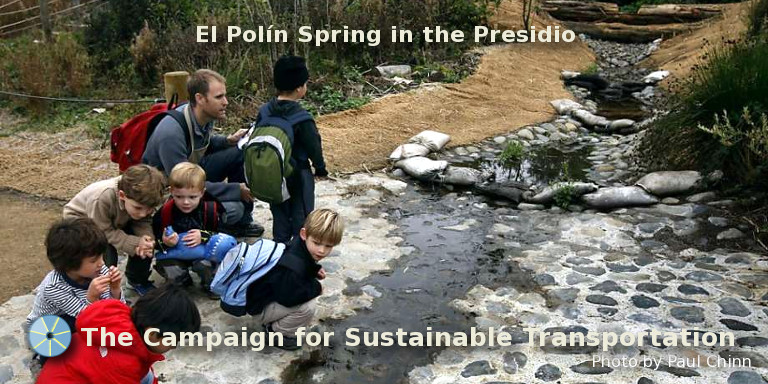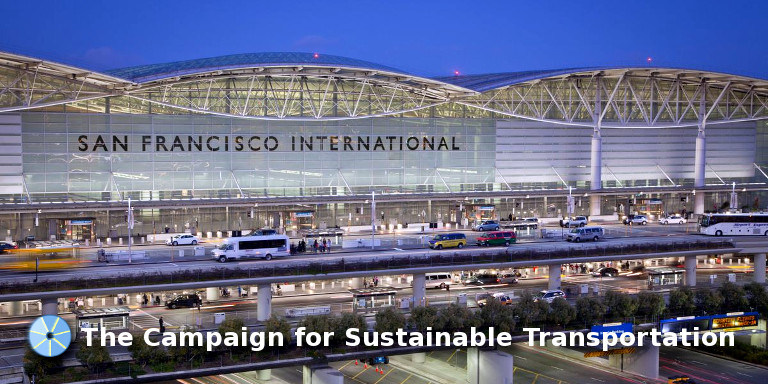How to get to San Francisco
(and leave your car in Santa Cruz—where there's no parking problem)
The trip from Santa Cruz to San Francisco is straightforward, involving only the Highway 17 Express and Caltrain, with a single transfer at the San Jose Diridon Station. The trip will take between two and three hours, depending on the time of day, and whether you travel on a weekday or a weekend. Most trips take about two and a half hours.
The complete schedule is here. The total fare from Santa Cruz is $17.50 (regular), or $14.00 (senior, aged 62 to 64), or $8.25 (senior, aged 65 or over).
Buy your Caltrain ticket (within four zones) before boarding the Caltrain. It can be purchased either from the Caltrain ticket machine or at the counter in the Station lobby. Caltrain also now enables the sale of tickets using its “Mobile app” if you have a mobile device.
Once you're in San Francisco, it's easy to get anywhere in the city using the MUNI. Muni operates approximately 80 routes throughout San Francisco with stops within 2 blocks of 90% of all residences in the city. For example, it's a 45-minute ride on the N-Judah train from the Caltrain Station to the Ocean Beach at Judah, or you can walk north from the Caltrain Station one long block to the AT&T Park. A complete list of all the MUNI buses and trains available from the Caltrain Station is here.
The basic fare to ride on the MUNI is $2.75 ($1.35 if you're 65 or over) if you pay with cash. (There is one exception: If you want to ride a cable car, it's $7.00, no matter how old you are.)
You can save $0.25 per trip if you pay with either a Clipper Card or MuniMobile. The Clipper Card is especially useful, since it works on MUNI, BART, Caltrain, VTA, SamTrans and several other Bay Area carriers (but not yet on Santa Cruz METRO). Click on the Clipper Card link above for information, or to order one online.
Consider taking your bicycle
The Highway 17 Express has space for three bicycles in its front rack, and every Caltrain accepts bicycles, with two of its cars specially equipped to carry a total of up to 80 bicycles. Once in the City, you can, for example, ride your bike across the Golden Gate Bridge and back. For tips on taking your bicycle on the Caltrain see this page, where there's a good video.
How to get to the San Francisco Airport (SFO)
(This trip is relaxing, safe and inexpensive.
You won't
have to worry about where to park your car.
Just leave it in Santa Cruz.)
The trip to SFO from Santa Cruz generally takes between two and two and a half hours, depending on the time of day. (The latest return trip takes over three hours, due to a forty-minute wait in San Jose for the last 17 Express bus.) The total fare from Santa Cruz is $20.30 (regular), or $12.30 (senior, 65 or over). On weekdays, the earliest you can get to SFO is 6:44 am, leaving from the Santa Cruz Metro Station at 4:40 am. Also on weekdays, the latest you can leave SFO is 8:27 pm, arriving in Santa Cruz at 11:41 pm. Use the Trip Planner on the BART home page to get details.
Start out as if you were going to San Francisco, taking the Highway 17 Express to the San Jose Diridon Station. Then get on the Caltrain (after purchasing your ticket—within three zones, not four) and take the train to Millbrae.
At the Millbrae Station, purchase a BART ticket from the machine, and board the BART train (one stop) to San Bruno, where there is a timed transfer to the train to SFO. The BART fare is $5.05 ($1.70 for seniors with a Clipper card), taking a total of 11 to 12 minutes to reach SFO. BART trains generally run every 15 minutes. On weekends BART travels directly from Millbrae to SFO, with no need for the transfer at San Bruno, cutting the time by about 5 minutes.



